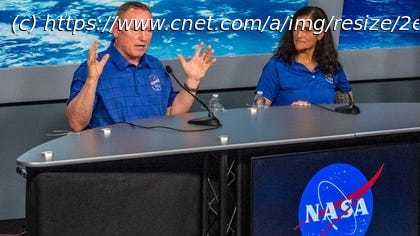For 13 weeks, Suni Williams and Butch Wilmore have been on the International Space Station. They were supposed to be there for eight days.
For 13 weeks, Suni Williams and Butch Wilmore have been on the International Space Station. They were supposed to be there for eight days.
It sounds like the pitch for a creepy science-fiction or horror movie: Two astronauts are stranded on a space station, and their spacecraft — with no crew — leaves them there and returns to Earth.
That’s the scenario that unfolded late Friday when Boeing’s Starliner capsule left astronauts Sunita “Suni” Williams and Barry “Butch” Wilmore on the International Space Station and successfully landed at White Sands Space Harbor in New Mexico.
But for the two seasoned astronauts stuck on the ISS, the situation isn’t nearly as Hollywood-scary as it might sound. Let’s break it down.Who are the astronauts?
Wilmore, 61, and Williams, 58, are veteran astronauts, both naval officers and former test pilots. Williams has been a NASA astronaut since 1998, and Wilmore since 2000. Both have plenty of experience in space.
Williams is the former record holder for most spacewalks by a woman (seven) and most spacewalk time for a woman (50 hours, 40 minutes), and in 2007, she ran the first marathon by any person in space.
In 2009, Wilmore piloted the Space Shuttle Atlantis on its mission to the ISS, and in 2014, he was part of the ISS crew that used a 3D printer to manufacture a tool — a ratchet wrench — in space, the first time humans manufactured something off-world. What is their mission in space?
Wilmore, as commander, and Williams, as pilot, traveled to the ISS on a 15-foot-wide, Boeing-made capsule called Starliner. They launched on June 5 and docked with the ISS on June 6. NASA hopes Starliner will give the organization a new way to get crews to and from the ISS, and the fact that it’s Boeing-made is another sign that NASA is starting to lean on the private sector for its human spaceflight options, The New York Times reported.
Wilmore and Williams’ ISS mission was supposed to last a mere eight days, during which they’d test out aspects of Starliner and see how it operates with a human crew in space.






